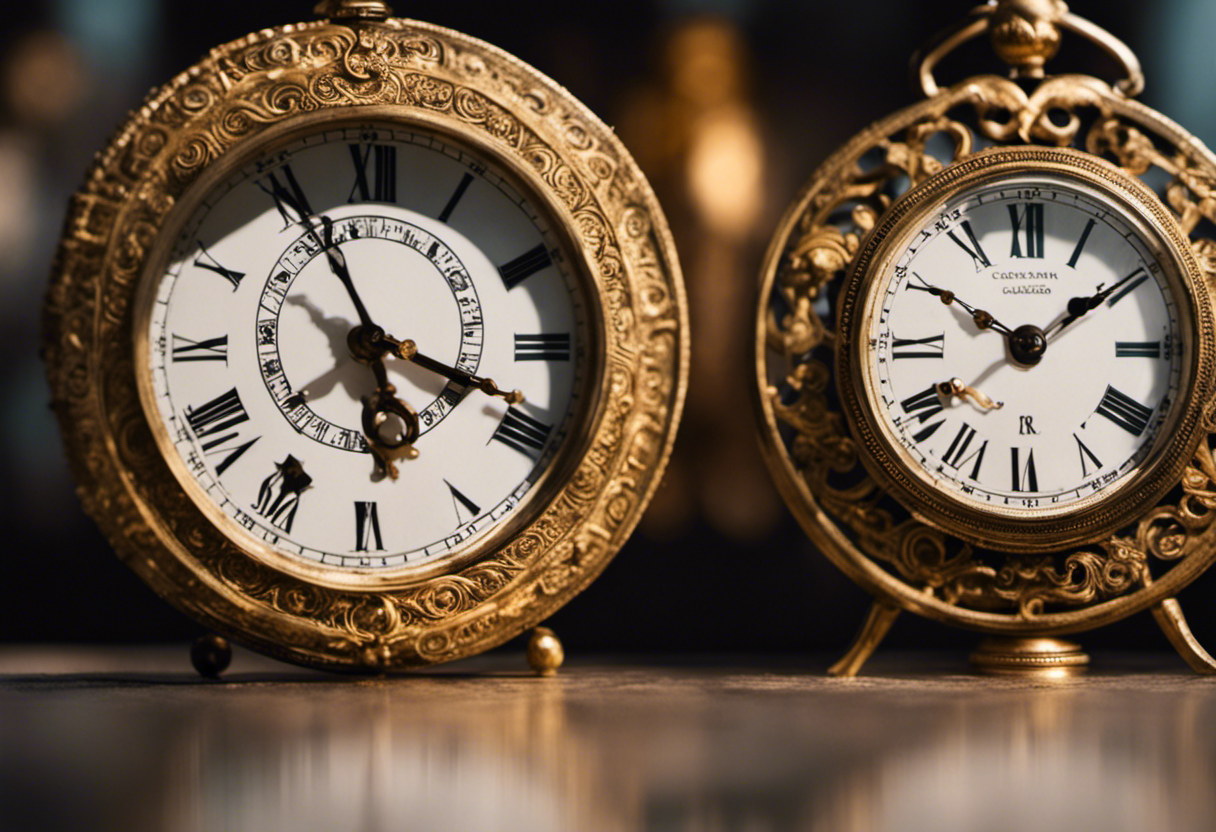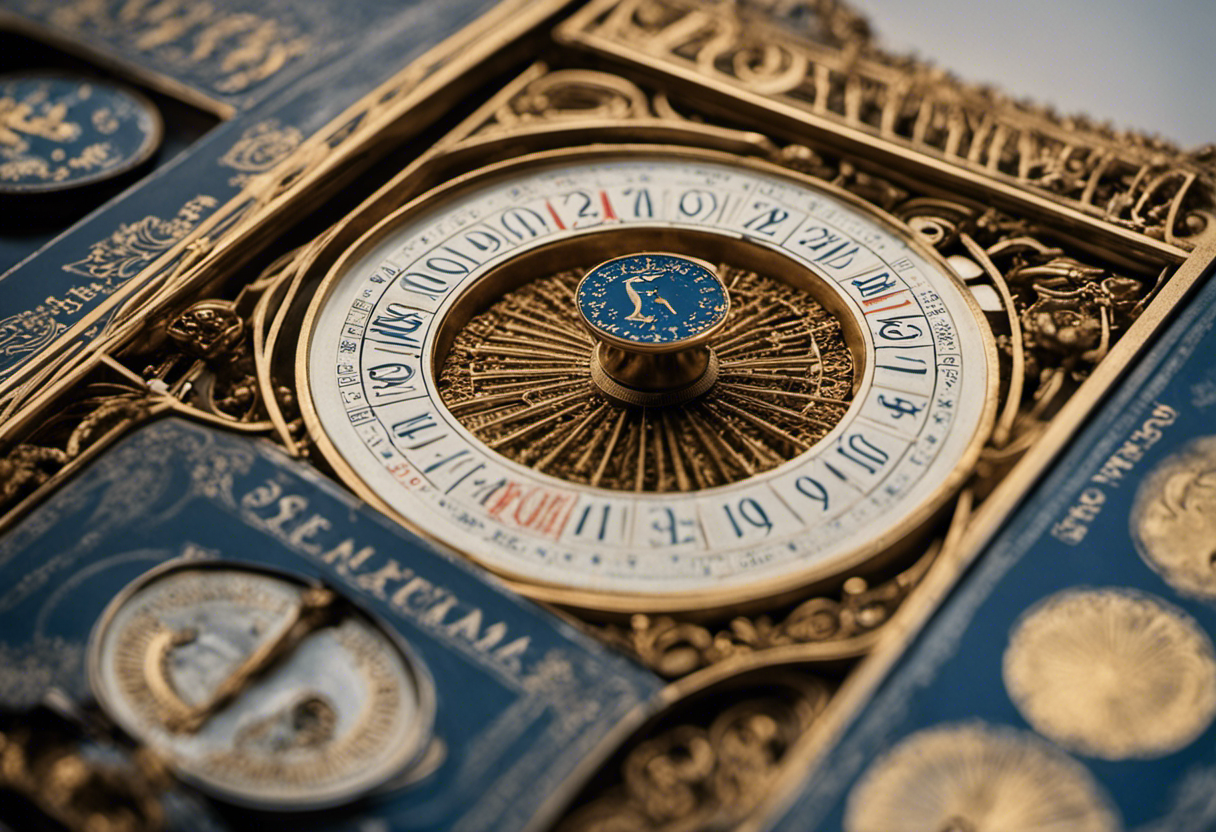In the realm of timekeeping, the Gregorian and French Republican calendars stand as notable milestones in human history. While both systems were designed to organize the passing of days, months, and years, they differ significantly in their origins, structures, and cultural impacts.
This article aims to explore the key differences between the Gregorian and French Republican calendars, shedding light on their respective influences on society and culture. By analyzing their legacies and modern-day applications, we can gain a deeper understanding of the intricate relationship between time and human civilization.
Key Takeaways
- The Gregorian calendar was introduced in 1582 to reform the Julian calendar and is widely used worldwide, while the French Republican calendar was introduced during the French Revolution in 1793 and abolished in 1806.
- The Gregorian calendar is a solar calendar with 12 months averaging 30 or 31 days, while the French Republican calendar has 12 months of 30 days each, with additional 5 or 6 days called ‘complementary days’.
- The Gregorian calendar standardized the measurement and organization of time, facilitating communication, trade, and cooperation between societies, while the French Republican calendar aimed to break away from religious influences and promote a more secular society during the French Revolution.
- The Gregorian calendar plays a crucial role in determining the dates of religious holidays and cultural events, while the French Republican calendar, although no longer in official use, continues to be studied for its mathematical and decimal-based structure.
Origins of the Gregorian and French Republican Calendars


The origins of the Gregorian and French Republican calendars can be traced back to historical events and the efforts of prominent individuals.
The Gregorian calendar, named after Pope Gregory XIII, was introduced in 1582 to reform and correct the Julian calendar. The Julian calendar, which had been in use for over 1600 years, had a small discrepancy in its calculation of leap years, resulting in a misalignment with the solar year. This discrepancy led to the gradual shift of the calendar seasons.
To rectify this, Pope Gregory XIII commissioned a panel of astronomers and mathematicians to develop a new calendar that would accurately reflect the solar year. The resulting Gregorian calendar was implemented by several Catholic countries, and later adopted by other nations, leading to its evolution as the most widely used calendar worldwide.
On the other hand, the French Republican calendar, also known as the French Revolutionary calendar, was introduced during the French Revolution in 1793. The aim was to break away from the traditional calendar system associated with the monarchy and the Catholic Church. The French Republican calendar was part of a broader effort to establish a new cultural and political identity for France.
It featured a decimal-based system, with ten-day weeks and new names for the months, inspired by nature and the revolution. However, the French Republican calendar was short-lived, as it was abolished in 1806, during the Napoleonic era. Despite its limited lifespan, the French Republican calendar played a significant role in the history of calendar development and the influence of the French Revolution on various aspects of society.
Structure and Components of the Gregorian Calendar


A significant aspect of the Gregorian calendar is its structure and the various components that make up this widely used calendar system. The Gregorian calendar is a solar calendar, which means it is based on the Earth’s revolution around the sun. It consists of 12 months, with each month averaging 30 or 31 days, except for February which has 28 days in common years and 29 days in leap years. This structure was designed to align the calendar with the solar year, ensuring that it closely matches the length of a tropical year.
The historical context of the Gregorian calendar’s structure is rooted in the reforms made by Pope Gregory XIII in 1582. The goal was to address the inaccuracies in the previous Julian calendar, which had gradually drifted out of sync with the solar year. To rectify this, the Gregorian calendar introduced a new leap year rule, which states that a year is a leap year if it is divisible by 4, except for centennial years that are not divisible by 400. This adjustment helps to maintain a more accurate alignment with the Earth’s revolution around the sun.
Structure and Components of the French Republican Calendar


The French Republican Calendar, introduced during the French Revolution, had several unique features that set it apart from other calendars.
These features included a decimal system of timekeeping, with each day divided into ten hours and each hour divided into 100 minutes.
Additionally, the calendar was designed to reflect the revolutionary ideals and symbolism, with new names for the days and months that were based on natural elements and agricultural activities.
Unique Calendar Features
With its innovative design, the French Republican Calendar introduced a multitude of unique calendar features that departed from traditional timekeeping methods. This calendar had a cultural significance as it was created during the French Revolution, a time of radical change and transformation.
The calendar aimed to reflect the revolutionary ideals by erasing religious and monarchy-related references. The structure of the French Republican Calendar was based on decimal divisions, reflecting the influence of the French Revolution’s push for decimalization in various aspects of society. It consisted of 12 months, each with three ten-day weeks called ‘decades.’
Additionally, the calendar introduced new names for the months that were derived from nature and agricultural activities, further highlighting the connection to the land and the people. These unique features of the French Republican Calendar reflect its historical context and its attempt to create a new, revolutionary timekeeping system.
Revolutionary Symbolism in Calendar
Occasionally, the French Republican Calendar employed various symbols and components to convey the revolutionary ideals of the time. This revolutionary symbolism was seen in both the structure and components of the calendar.
The calendar had twelve months, each named after natural elements or agricultural activities, such as Thermidor (Heat) and Brumaire (Mist). This naming system reflected the emphasis on nature and agriculture, which were regarded as essential to the success of the revolution.
Additionally, the calendar featured ten-day weeks, with each day named after a common agricultural or industrial item. This structure aimed to distance the calendar from religious traditions and establish a new cultural significance rooted in the values of the revolution.
Key Differences Between the Gregorian and French Republican Calendars


Highlighting the significant contrasts between the Gregorian and French Republican calendars, a key difference lies in the methods used to determine the length of a year. Here are some key differences between the two calendars:
- Basis for Calculation: The Gregorian calendar is based on the solar year, which is the time it takes for the Earth to complete one orbit around the Sun. In contrast, the French Republican calendar was based on the length of a tropical year, which is slightly shorter than the solar year.
- Number of Days in a Year: The Gregorian calendar consists of 365 days in a common year and 366 days in a leap year. On the other hand, the French Republican calendar had 365 days in a year, divided into 12 months of 30 days each, with an additional 5 or 6 days called ‘complementary days’ added at the end of the year.
- Naming of Months: The Gregorian calendar uses traditional month names that have religious and historical significance, such as January, February, and December. In contrast, the French Republican calendar introduced new month names that reflected revolutionary symbolism and societal adjustments, such as Vendémiaire (Vintage), Brumaire (Mist), and Thermidor (Heat).
- Week Structure: The Gregorian calendar follows a 7-day week structure, with Sunday as the first day of the week. In contrast, the French Republican calendar introduced a new 10-day week structure, with each day named after a natural element or agricultural tool.
These differences in determining the length of a year and the structure of the calendar highlight the distinct approaches taken by the Gregorian and French Republican calendars.
Impact of the Gregorian Calendar on Society and Culture


One significant impact of the Gregorian Calendar on society and culture is that it standardized the measurement and organization of time. This standardization had profound cultural influences and historical significance. Prior to the Gregorian Calendar, different regions and cultures used various calendar systems, leading to confusion and inconsistencies in timekeeping. The introduction of the Gregorian Calendar brought about a uniform method of measuring time, which facilitated communication, trade, and cooperation between different societies.
The Gregorian Calendar’s impact on society and culture can be seen in various aspects of human life. For instance, it influenced religious practices and celebrations. The calendar’s establishment by the Catholic Church aimed to rectify the inaccuracies in the Julian Calendar and ensure the correct calculation of Easter. The adoption of the Gregorian Calendar by most Christian denominations led to the synchronization of religious observances, creating a sense of unity and shared tradition among believers.
Furthermore, the Gregorian Calendar’s standardization of time contributed to the development of science, technology, and commerce. With a consistent and universally accepted calendar, scientists could accurately record and compare observations, enabling the advancement of knowledge across different fields. Additionally, the business world greatly benefited from the Gregorian Calendar’s establishment, as it facilitated international trade and economic activities by providing a common framework for scheduling and planning.
Impact of the French Republican Calendar on Society and Culture


The implementation of the French Republican Calendar led to significant cultural shifts and changes in society.
It introduced new names and divisions for months and days, which required people to adjust their daily lives and celebrations.
Additionally, the calendar aimed to break away from religious influences and promote a more secular society, leading to societal reactions and adjustments as people adapted to this new system.
Cultural Shifts and Celebrations
With the implementation of the French Republican Calendar, significant changes occurred in society and culture. The calendar was not only a shift in timekeeping, but also had a profound impact on traditional celebrations and cultural practices. Here are four key cultural shifts and celebrations that were influenced by the French Republican Calendar:
- Abolition of religious holidays: The calendar aimed to remove religious influence from society, leading to the abolition of traditional religious celebrations and holidays.
- New names for months: The French Republican Calendar replaced traditional month names with more secular and nature-based names, reflecting a shift towards a more rational and scientific worldview.
- Revolutionary festivals: The new calendar introduced various revolutionary festivals to celebrate important events and figures of the French Revolution, fostering a sense of national unity and patriotism.
- Redefining New Year: The French Republican Calendar changed the start of the year to September, aligning it with the autumnal equinox and symbolizing a break from the old order.
These cultural shifts and celebrations demonstrate how the French Republican Calendar played a significant role in reshaping society and culture during the French Revolution.
Societal Reactions and Adjustments
As the French Republican Calendar was introduced, societal reactions and adjustments were inevitable due to the significant impact it had on French society and culture.
The adoption of the new calendar brought about profound societal adjustments as it sought to redefine timekeeping and reshape the way people organized their lives.
The shift from the Gregorian calendar to the French Republican Calendar not only impacted daily routines but also influenced cultural practices and traditions.
Festivals and religious celebrations were reimagined to align with the new calendar, leading to cultural shifts in the way these events were observed.
The new calendar also aimed to promote a sense of rationality and remove religious influences, which further contributed to cultural changes within French society.
Legacy and Modern-day Applications of the Gregorian and French Republican Calendars


The legacy and modern-day applications of the Gregorian and French Republican calendars have had a significant impact on various aspects of society. Here are four key points to consider:
- Historical significance: Both calendars have left a lasting legacy in the historical record. The Gregorian calendar, introduced by Pope Gregory XIII in 1582, has become the most widely used calendar system in the world. Its adoption by Catholic countries and subsequent spread to other parts of the world has shaped the way we measure time and plan our lives.
- Cultural and religious traditions: The Gregorian calendar plays a crucial role in determining the dates of religious holidays and cultural events. It provides a common framework for coordinating international activities, such as trade, travel, and diplomacy. Moreover, it has become deeply ingrained in various cultures and societies, influencing customs and traditions associated with specific dates and seasons.
- Scientific and astronomical applications: The Gregorian calendar is widely used in scientific research, particularly in fields like astronomy, physics, and geology. Its accuracy in measuring time allows for precise calculations and predictions. Similarly, the French Republican calendar, although no longer in official use, continues to be studied for its mathematical and decimal-based structure, providing insights into the development of mathematical systems.
- Timekeeping and international standardization: The Gregorian calendar serves as the basis for global timekeeping and international standardization. It provides a shared reference point for coordinating schedules, organizing events, and conducting business across different time zones. Its widespread use in international communication and commerce underscores its practical significance in the modern world.
Conclusion
In conclusion, the Gregorian and French Republican calendars have distinct origins, structures, and components.
While the Gregorian calendar is widely used today and has had a significant impact on society and culture, the French Republican calendar was short-lived and had limited influence.
Despite their differences, both calendars have left a lasting legacy and continue to be studied and analyzed in modern times.




